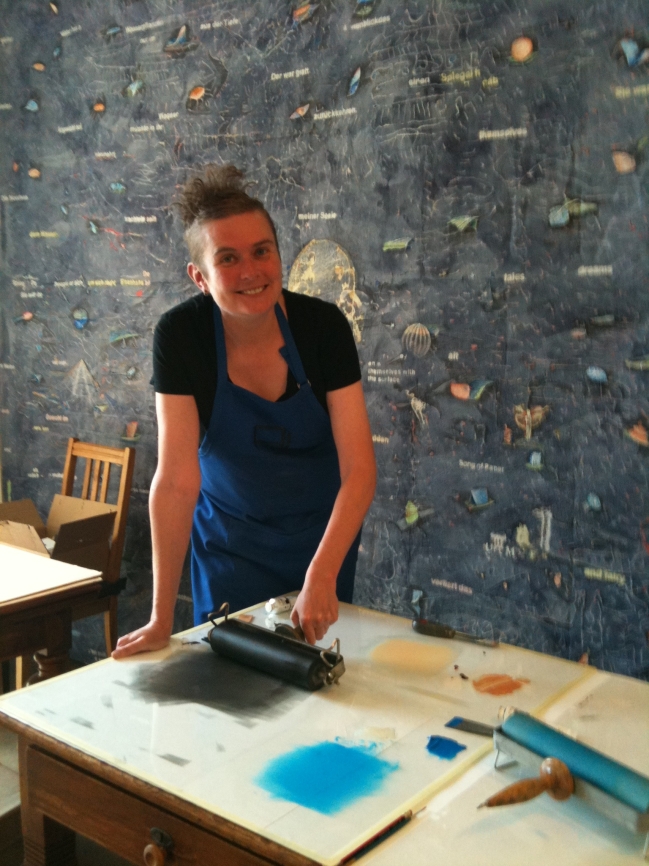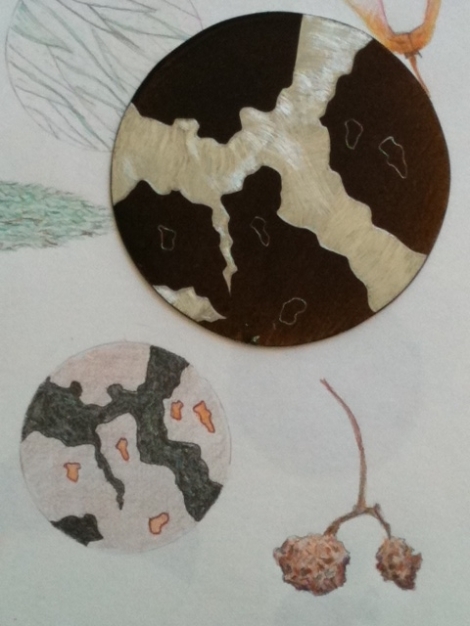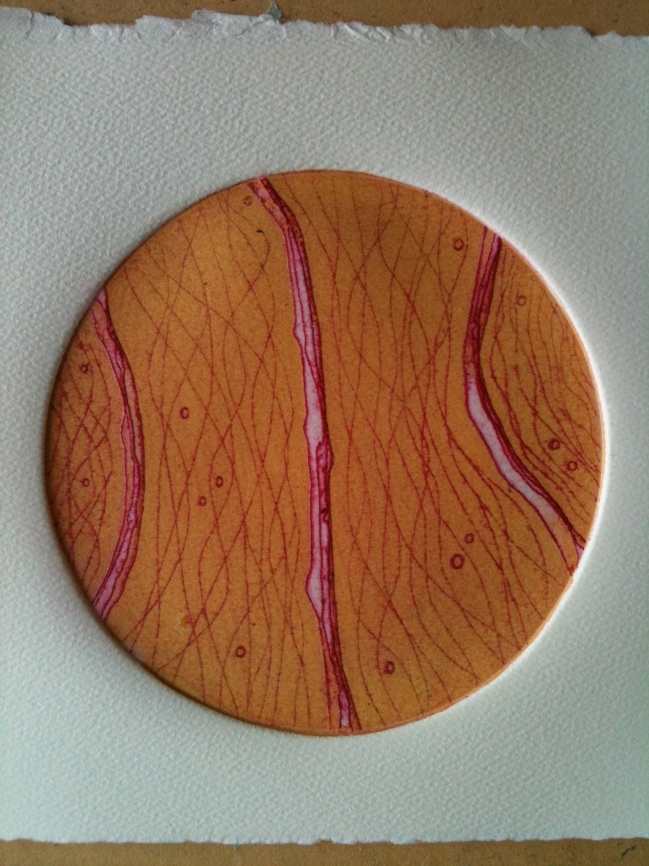
At arms length; since the industrial revolution that is how Western society has interacted with the natural world. There has been a gradual and seemingly inexorable process of distancing ourselves, removing our selves and more definitively of “seeing” ourselves as separate from the natural world rather than as a part of it. Industrialisation marks a turning point in our understanding of our place in the world, as being distinct from it, not part of it.
Industrialised societies have used a variety of lenses to get closer to, yet further from, the natural world. Think of microscopes, telescopes, cameras, etc. they all seem to bring the viewed object closer, yet when viewed out of context the object, in a sense, becomes more distant from us. Viewed via a lens our experience becomes disembodied. We privilege one sense over all others and we de-contextualise the looking we do by filtering it with a machine. For instance, when I look with my naked eye at a little patch of yellow lichen on a stone wall and I know what it is and my relationship to it. When I look at the same yellow lichen through the eyepiece of a microscope I am confronted with a mass of yellow disks isolated from any context.
Without prior knowledge of this object I cannot understand it or my relationship to it. The same thing happens with a telescope when I perceive a star through its lens; I loose the constellations that form its family and I cannot follow its path across the sky accompanied by the stories that would explain its dance through the seasons. How many times have you returned from holidays with the sneaking suspicion that in your endless quest for the perfectly captured moment you have failed to fully experience where you were? The entire trip viewed down the lens of a camera, the de-contextualised eye privileged above your other senses and certainly above a holistic sense of an embodied experience.
The ubiquitous presence of cameras in our lives means that many people spend much of their time viewing the world via their smart-phone taking pictures, editing them and uploading them to another screen in a de-contextualised virtual space. When we use cameras mounted on remotely controlled drones we can so separate ourselves from the actual viewing experience as to remove ourselves from physical danger; perhaps this is a good thing? Or does it merely make it easier for us to distance ourselves from responsibility for our actions? In his novel Homo Faber, Swiss writer Max Frisch describes technology as “the knack of so arranging the world that we need not experience it.”
Yet certainly there are benefits to be had from this technology, indeed I owe my life to the superior surgical skills of neuroscientists guided by tiny cameras manipulated through my blood vessels. However, we should perhaps be wary of privileging a disembodied viewing experience because of the lack of regard it seems to foster in us for our relationships with the world around us.
Why does this matter?
Context, it seems, is important. It’s how we make sense of our world and our place in it. It gives us spatial, social, cultural (and any number of other kinds of) meaning. Context also brings us an awareness of consequences. When one’s interactions with the world are mediated by a machine, a de-contextualising lens, we are divorced from an experience informed by contextualising meaning. Without this sense of place or relationship one cannot have an awareness of consequences. Perhaps it is because of the saturation of such disembodied viewing experiences in our culture that we so often find ourselves looking without seeing, viewing our world without an awareness of our relationship to it and with scant regard for the consequences.







